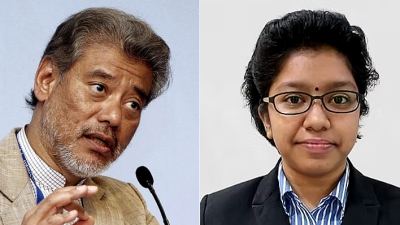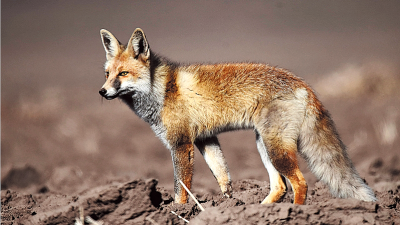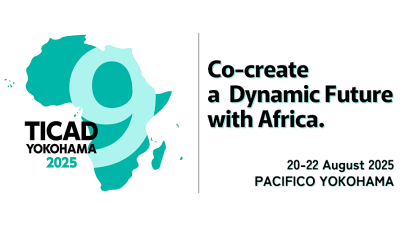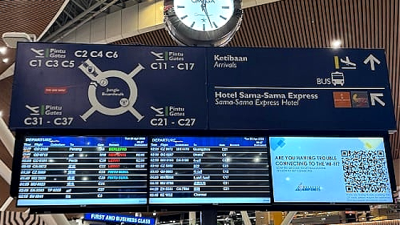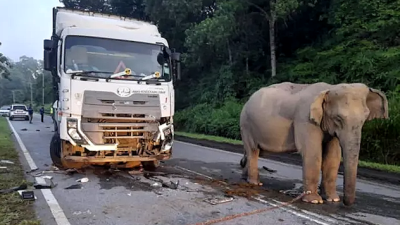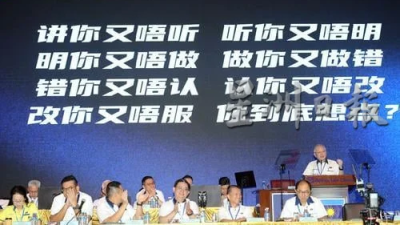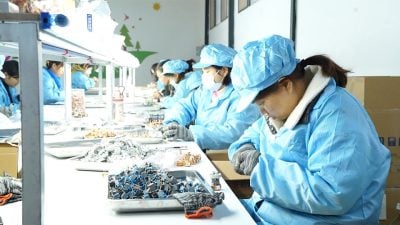
I recently had the rare opportunity to meet mountain gorillas who share 98.4% of their DNA with humans!
It is estimated that there are only about 1,112 such animals in the wild globally, predominantly in two countries, Rwanda (603) and Uganda (500). This means that this rare species is very much on the brink of extinction!
In view of this, gorillas have been closely protected by World Animal Protection. Unfortunately, despite unrelenting efforts to protect this critically endangered animal species, the gorillas have been specifically targeted by poachers until this day because of the lucrative prices they fetch in the global wildlife market.
Thankfully since 1967, Rwanda, home of mountain gorillas, had hosted a “gorilla nanny” — American primatologist and conservationist Dian Fossey, who not only closely tracked the gorillas, but also spent nearly 20 years of her time analysing and recording the gorillas’ genes as well as their living conditions.
Meanwhile, she also unveiled the truth that gorillas were actually sharing the same ancestors as humans.
Fossey was veritably the first woman in the world to have devoted her entire lifetime to the study of gorillas, one of humans’ closest cousins.
She was not only committed to the preservation of the natural habitat of mountain gorillas, but also did her utmost to save these animals from heinous poachers.
Because of that, her work had invariably clashed with the interests of poachers, leading to her tragic death.
On December 26, 1985, Fossey was found mysteriously dead inside her cabin at a Rwanda research camp. She was only 53! Her death was later confirmed to be from murder, although her killer has yet to be apprehended nor anyone prosecuted, to this day.
Fossey was buried in the forest of Karisoke in Rwanda, where she had personally laid to rest her primate friends cruelly mutilated by poachers. She was buried next to her most beloved Digit gorilla who was beheaded by the poachers in 1977.
In 1988, Fossey’s best-selling book Gorillas in the Mist was made into a highly-rated movie depicting the daily lives of mountain gorillas as well as their tragic persecution by the poachers, raising global awareness about the doomed destiny of this rare animal species.
Owing to Fossey’s selfless dedication and sacrifices, several African countries with significant populations of mountain gorillas have since enacted laws to protect these animals and to relocate the indigenous peoples living inside the forests. This is to ensure that the gorillas can live and reproduce safely and freely in the forests.
During the trip, we took part in the events to explore the mountain gorillas at two national parks in Rwanda and Uganda. Apparently the trip had been very sternly scrutinised before we could be issued the entry permits.
First and foremost, the number of people allowed into the national parks was capped at 100 a day, and the entrance fee was set at US$800 per person at Uganda’s Volcanoes National Park, and a staggering $1,500 at Rwanda’s Volcanoes National Park! Even so, a ticket is hard to come by, especially during peak holiday seasons!
As if that’s not enough, lodgings outside the national parks are also priced in US dollars, and they are all prohibitively expensive! That said, gorilla lovers from around the world are undeterred by the tough journeys to come all the way here just to meet humans’ closest cousins face-to-face!
In Bwindi Impenetrable Forest National Park, the 11 of us were split into two teams. The 6-member team was driven in a 4WD to the park’s entrance, before making the 40-minute hike to meet the five mountain gorillas there.
What I really can’t understand is why we can be so different even though we are genetically so similar!
As for the other 5-member team, they were made to take a much tougher route, hiking for five hours both ways, before they got to meet the gorillas. This team was led by me, along with two eco guides and escorted by two armed soldiers, as we hiked for two and a half hours into the deepest parts of the national park.
Actually the trackers inside the park had already started tracking the gorillas one or two hours before our arrival, so that we got to see the 6-member Katwe silverback gorilla family. And we even had a full 60 minutes observing the gorillas quietly from near. Such a trip was absolutely rewarding and unforgettable!
Did you know that gorillas, chimpanzees, bonobos, orangutans and humans all belong to the Hominidae family? They could all be traced back to the same ancestors six to seven million years ago, with the gorillas sharing 98.4% of genes with humans!
What I really can’t understand is why we can be so different even though we are genetically so similar!
While gorillas and humans once shared common ancestors, they evolved differently and their DNAs experienced gradual changes as they were passed down from generation to generation.
The reality is, the gorillas could still feel the kind gestures from humans and have been able to coexist peacefully with us. As such, they will not attack humans deliberately.
Shockingly, unlike the communal living of chimpanzees, the gorillas are largely family-based, with each family consisting of two to 20 members.
When a silverback gorilla reaches adulthood at the age of 10, he will leave his family to set up his own. This same cycle goes on and on.
Gorillas typically live between 45 and 50 years, and are found scattered inside the equatorial rainforests at the border of Rwanda and Uganda.
While conservation efforts continue, the authorities hope that humans will gain a better understanding of the gorillas’ ways of living through site inspection and close encounters with these animals, so that they can appreciate the importance of peaceful cohabitation and inter-relations among all living things on this planet!
At Wild Frontiers Dian Fossey Research Centre in Musanze, Rwanda, I respectfully browsed through the history of Dian Fossey.
A well-educated woman, Fossey could have accepted the offers from some of America’s most established research institutes and lived a comfortable life, instead of opting to tread the wild frontiers of war-torn and bandits-infested Africa to selflessly safeguard the mountain gorillas totally unrelated to her for almost two decades!
Because of Fossey’s efforts, the mission of saving the gorillas has been able to continue generation after generation.
In whatever area we specialise in, I’m convinced that we can all be that candle which will light up the lives of the other people.
While knowledge is of great importance, it’s a willing heart that is most invaluable!
(Lee San is Founder and Group Executive Chairman of Apple Vacations. He has traveled to 132 countries, six continents, and enjoys sharing his travel stories and insights. He has also authored five books.)
ADVERTISEMENT
ADVERTISEMENT






